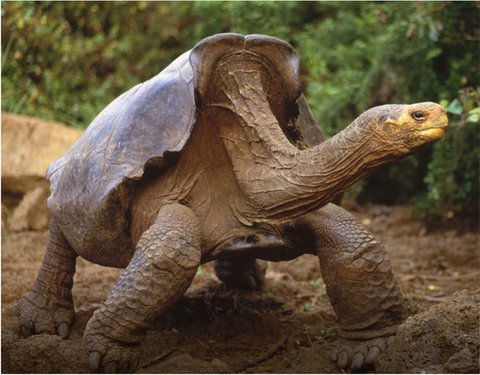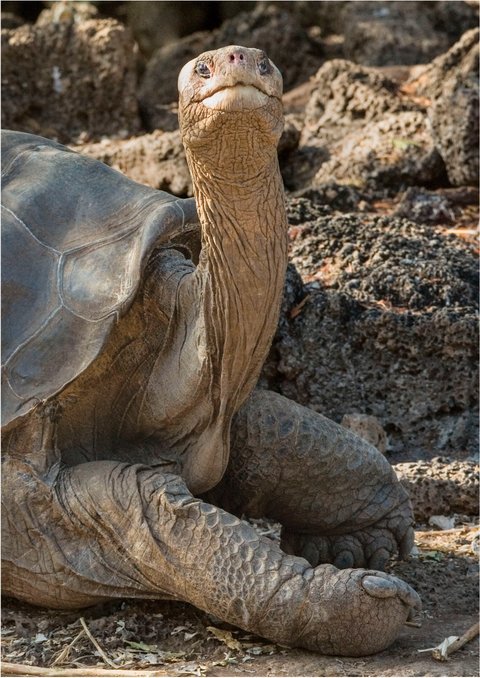LandofGiants
Perhapsthemostwell‑knownspeciesoftheGalápagosisthegiant tortoise.
Eachspeciesis“built”tosurviveonitsisland.Tortoiseswithdomedshellsliveinhighlandswithfertilepastures.Theshapeoftheirshellkeepsthemfromraisingtheirheadshigh.So,theyneedtofindfoodclosetothe ground.
Othertortoiseshaveshellsthatcurveupwardatthefront.Theyliveonislandswithlessvegetation.Theycanreachforfoodthat’shigheroffthe ground.

Galápagosgiant tortoise

gianttortoisewithsaddleback shell

gianttortoisewithdomed shell
AtRisk
Sadly,oneofthetortoise’sbestadaptationsbecameacauseofitsdecline.Gianttortoisescansurvivefornearlyayearwithoutfoodorwater.So,sailorsandwhalerscollectedthemtohavefreshmeattoeatonlongtrips.Tortoiseswerealsoexploitedfortheirfat,usedinlamps.About200,000tortoiseswerekilledforthesereasons.In1959,theGalápagosNationalParkwascreated.Soonafter,theTortoiseBreedingCenteronSantaCruzwas established.
TortoisesToday
TheTortoiseBreedingCentertookabigsteptoslowthelossofgianttortoises.Theybeganraisingcaptivetortoises.Oncethey’relargeenoughtobesafe,thecenterreintroducesthemintothewild.Bytheendof2017,morethan7,000 youngtortoiseswerereturnedtotheir islands.
Thecenteralsowantstobringtortoisesback toislandswherethey’vegoneextinct.Thishappenedontwoislandsinthemid‑1800s.Andin2012,withthedeathofLonesome George.
WhoWasLonesomeGeorge?
ThePintaIslandtortoisewasextinct.Noonehadseenonesince1906.Thenin1971,ascientistdiscoveredonebyaccident.ThattortoisewasLonesomeGeorge.GeorgewasmovedtotheCharlesDarwinResearchStationonSantaCruz.Helivedtherefor40years.Hewasabout100whenhedied.Bythen,Georgehadbecomeasymbolforconservation everywhere.
